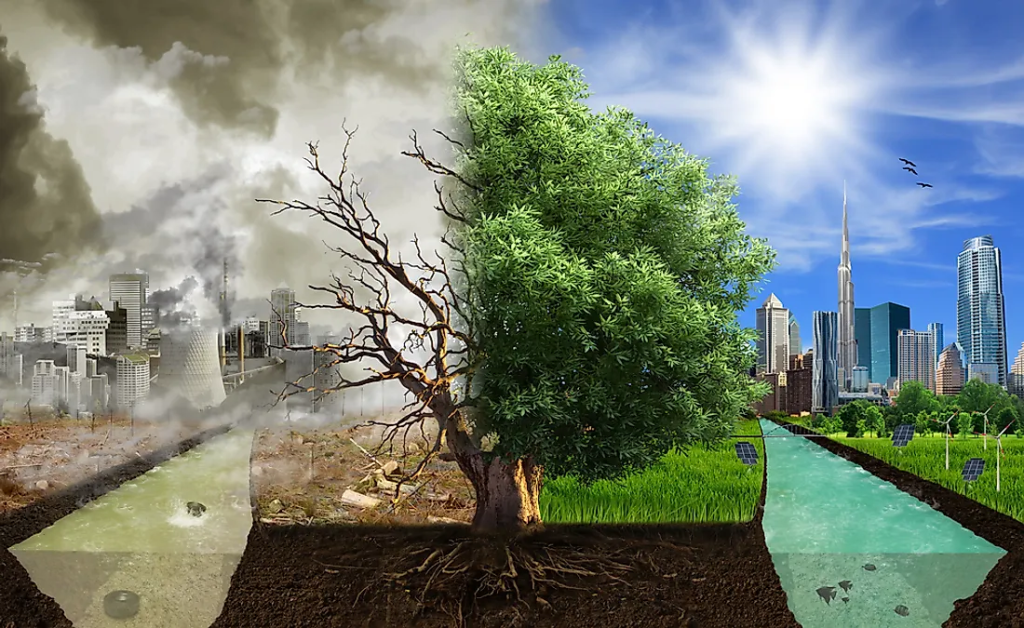Animal agriculture plays a pivotal role in accelerating global warming, yet its impact often goes unnoticed. Responsible for 14.5% of global greenhouse gas emissions—on par with the transportation sector—it contributes to methane release, deforestation, water scarcity, and energy overuse. Beyond emissions, the industry drives habitat destruction and biodiversity loss while consuming vast natural resources. This article examines how livestock farming intensifies climate change and underscores the urgent need for sustainable practices to mitigate its environmental footprint and protect our planet’s future
When it comes to discussing global warming, one crucial factor often gets overlooked: the significant role of animal agriculture. While we often associate climate change with fossil fuels and deforestation, the impact of livestock farming on our environment is undeniable. In this post, we will shine a light on the far-reaching consequences of animal agriculture on global warming and emphasize the urgent need for sustainable farming practices.

Understanding the Emissions Footprint of Animal Agriculture
Animal agriculture is a major contributor to greenhouse gas emissions. Livestock farming alone accounts for approximately 14.5% of global emissions, equivalent to the entire transportation sector. How does this happen? Well, livestock generate substantial amounts of methane and nitrous oxide, two potent greenhouse gases. Methane is produced during digestion and as a byproduct of manure decomposition, while nitrous oxide arises from the use of nitrogen-based fertilizers.
To put the impact of livestock emissions into perspective, let’s take a closer look at methane. Methane has a global warming potential 28 times greater than carbon dioxide over a 100-year period. With over a billion cattle worldwide producing methane, it becomes a significant concern. Additionally, deforestation and land-use change result in the release of immense carbon stores, further fueling global warming.
Water and Land Usage
Animal agriculture also exerts tremendous strain on our water resources. Livestock farming necessitates enormous volumes of water, not only for animal drinking needs but also for crop irrigation and cleaning purposes. To illustrate, it takes around 1,800 gallons of water to produce a single pound of beef. Moreover, the excessive use of water by animal agriculture can contribute to water scarcity, especially in regions prone to drought.
Furthermore, livestock farming significantly impacts land usage. Huge areas of land are transformed into grazing pastures or used to grow feed crops for animals. This leads to deforestation, soil erosion, and habitat destruction, causing loss of biodiversity and exacerbating climate change. The amount of land required to produce animal-based products far surpasses that necessary for plant-based alternatives.
Resource Intensiveness and Energy Consumption
The resource demands of animal agriculture contribute to its environmental footprint. Raising livestock requires vast amounts of feed, fertilizers, and antibiotics. The production of feed crops like soy and corn alone requires a significant area of land, fertilizer use, and fossil fuel consumption. In fact, approximately one-third of the world’s cereal crops are used as feed for livestock.
In addition to resource intensiveness, animal agriculture consumes substantial amounts of energy. This includes energy used for feed production, transportation of animals and animal products, and processing. The energy required to produce a plant-based diet is significantly lower compared to that for an animal-based diet.
The Nexus of Livestock and Deforestation
Deforestation and livestock farming are intrinsically linked. As the demand for animal products rises, farmers clear vast swathes of land for grazing or to grow crops like soy to feed livestock. The consequences of deforestation are twofold. Firstly, it leads to the loss of diverse ecosystems and the displacement of indigenous communities. Secondly, deforestation releases immense carbon stores, contributing to climate change.

The Amazon rainforest is a prime example of the connection between animal agriculture, soy production, and deforestation. Beef production and soy cultivation, primarily used for animal feed, are significant drivers of deforestation in this region. The destruction of the Amazon rainforest not only harms biodiversity but also releases billions of tons of stored carbon dioxide into the atmosphere.
Conclusion
The role of animal agriculture in global warming cannot be ignored. From its significant emissions footprint to its strain on water resources and contribution to deforestation, livestock farming poses serious environmental challenges. However, by recognizing these challenges and actively working towards sustainable solutions, we can pave the way for a greener future. It is high time that individuals, industries, and governments come together to address the role of animal agriculture in combating climate change and foster a more sustainable and compassionate world.

4.2/5 - (5 votes)



